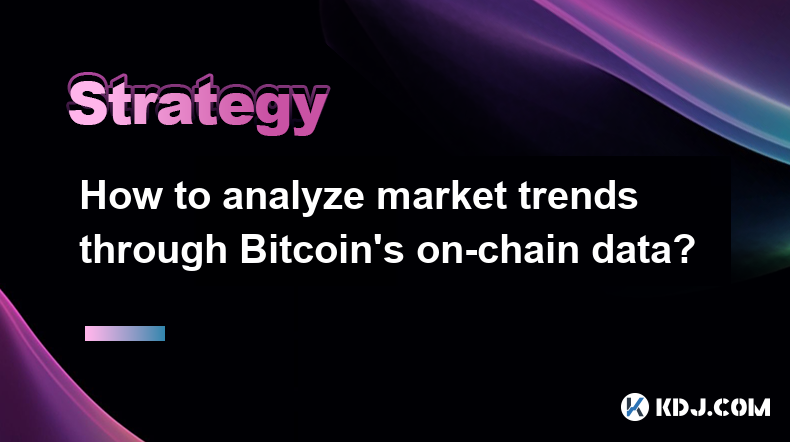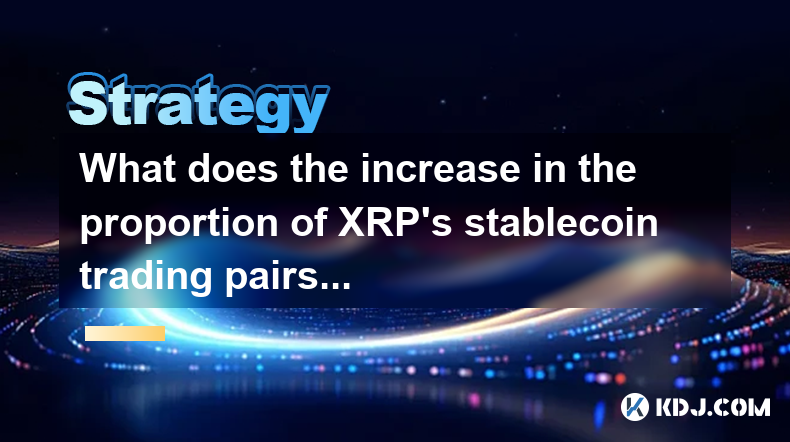-
 Bitcoin
Bitcoin $90,752.5471
4.27% -
 Ethereum
Ethereum $1,688.3053
6.41% -
 Tether USDt
Tether USDt $1.0006
0.08% -
 XRP
XRP $2.1453
3.23% -
 BNB
BNB $607.1447
1.71% -
 Solana
Solana $144.2444
7.14% -
 USDC
USDC $0.9997
-0.01% -
 Dogecoin
Dogecoin $0.1703
8.31% -
 TRON
TRON $0.2467
1.46% -
 Cardano
Cardano $0.6557
5.58% -
 Chainlink
Chainlink $13.7511
5.08% -
 Avalanche
Avalanche $21.5976
7.79% -
 UNUS SED LEO
UNUS SED LEO $8.9863
-1.47% -
 Stellar
Stellar $0.2566
1.55% -
 Sui
Sui $2.3975
10.43% -
 Shiba Inu
Shiba Inu $0.0...01300
5.63% -
 Toncoin
Toncoin $2.9806
2.64% -
 Hedera
Hedera $0.1760
4.31% -
 Bitcoin Cash
Bitcoin Cash $355.4488
3.40% -
 Litecoin
Litecoin $82.9174
5.86% -
 Hyperliquid
Hyperliquid $18.6132
6.14% -
 Polkadot
Polkadot $3.8737
1.18% -
 Dai
Dai $0.9998
0.01% -
 Bitget Token
Bitget Token $4.5191
1.97% -
 Ethena USDe
Ethena USDe $0.9996
0.04% -
 Pi
Pi $0.6386
1.01% -
 Monero
Monero $220.4697
3.17% -
 Pepe
Pepe $0.0...08356
7.90% -
 Uniswap
Uniswap $5.5839
5.52% -
 Aptos
Aptos $5.0800
1.52%
How to analyze market trends through Bitcoin’s on-chain data?
Analyzing Bitcoin's on-chain data, such as transaction volume, active addresses, and miner revenue, can provide valuable insights into market trends, network activity, and potential price correlation.
Feb 25, 2025 at 05:06 am

Key Points:
- Understand the types and sources of Bitcoin on-chain data.
- Analyze metrics such as transaction volume, active addresses, and exchange flows.
- Identify trends in miner behavior and hashrate.
- Correlate on-chain data with price action and macroeconomic factors.
- Monitor derivatives markets to gauge market sentiment.
Understanding Bitcoin On-Chain Data
Bitcoin's on-chain data refers to all publicly available information recorded on the blockchain, providing valuable insights into network activity and market dynamics.
Sources of on-chain data include:
- Blockchain explorers: Websites and tools that allow users to query and view transactions and block data.
- On-chain analytics platforms: Services that provide advanced analysis and visualization of on-chain data.
- APIs (Application Programming Interfaces): Programming interfaces that allow developers to access and process on-chain data directly.
Types of on-chain data include:
- Transaction data: Records of all Bitcoin transactions, including their value, sender, receiver, and timestamp.
- Address data: Information about Bitcoin addresses, such as their balance, transaction history, and type (e.g., exchange, wallet).
- Block data: Information about blocks, including their size, timestamp, and mining information.
Analyzing On-Chain Metrics
To analyze market trends through Bitcoin's on-chain data, consider the following metrics:
- Transaction Volume: The total number of Bitcoin transactions processed over a period. High transaction volume indicates increased activity and potentially higher demand.
- Active Addresses: The number of unique addresses involved in Bitcoin transactions. Increasing active addresses suggest wider network adoption and engagement.
- Exchange Flows: The volume of Bitcoin flowing onto or off cryptocurrency exchanges. Significant inflows can indicate selling pressure, while substantial outflows may signal accumulation.
Monitoring Miner Behavior and Hashrate
The behavior of Bitcoin miners and the overall hashrate, the measure of computing power on the network, provides valuable information:
- Miner Revenue: Calculate miners' revenue by multiplying Bitcoin's block reward with the hashrate. Increasing revenue implies higher mining profitability and network security.
- Hashrate Distribution: Examine the percentage of hashrate controlled by different mining pools. High concentration raises concerns about potential centralization.
- Difficulty Adjustments: Monitor changes in mining difficulty, which auto-adjusts based on network conditions. Difficulty increases suggest higher mining competition and network security.
Correlating On-Chain Data with Price Action and Macroeconomics
Correlating on-chain data with Bitcoin's price action and broader macroeconomic factors can enhance analysis:
- Price Correlation: Compare on-chain metrics to price movements to identify potential relationships and leading indicators of market direction.
- Economic Sentiment: Consider economic indicators (e.g., GDP growth, inflation) to assess their impact on Bitcoin's market performance.
- Regulatory Landscape: Monitor regulatory developments and their potential effects on Bitcoin's on-chain activity and market sentiment.
Monitoring Derivatives Markets
Derivatives markets, such as futures and options, offer insights into market sentiment:
- Futures Volume and Open Interest: High futures volume indicates increased speculative trading, while rising open interest suggests growing market expectation.
- Options Premiums: Analyze the premium paid for options to gauge market participants' perception of risk and volatility.
- Basis Futures-Spot: Compare the difference between futures prices and spot prices to identify arbitrage opportunities and market sentiment.
FAQs:
- What is the best on-chain data source?
There are numerous reliable on-chain data providers, including Glassnode, Santiment, and CryptoQuant. Choose the platform that best fits your specific data requirements and analysis needs.
- How often should I analyze on-chain data?
The frequency of analysis depends on your trading strategy and market conditions. Some traders monitor on-chain data daily, while others focus on weekly or monthly trends.
- Is on-chain analysis enough for successful trading?
While on-chain data provides valuable insights, it should not be your sole decision-making source. Combine on-chain analysis with other factors such as technical analysis, sentiment indicators, and macroeconomic trends.
Disclaimer:info@kdj.com
The information provided is not trading advice. kdj.com does not assume any responsibility for any investments made based on the information provided in this article. Cryptocurrencies are highly volatile and it is highly recommended that you invest with caution after thorough research!
If you believe that the content used on this website infringes your copyright, please contact us immediately (info@kdj.com) and we will delete it promptly.
- How Much Could $2,000 in Ripple (XRP) Be Worth at the Peak of the Bull Run?
- 2025-04-23 02:00:20
- Mind of Pepe (MIND) Token Presale Sells Out Ahead of Listing, Promises AI-Powered Meme Coin Experience
- 2025-04-23 02:00:20
- Galaxy Digital Moves $105M Worth of Ethereum to Solana
- 2025-04-23 01:55:12
- A major whale has made a significant move in the Mantra (OM) market
- 2025-04-23 01:55:12
- World of Women (WoW) Prepares to Enchant the World Once Again with its Flagship Event: the WoW Gala Lisboa
- 2025-04-23 01:50:12
- Onyxcoin (XCN) Has Plunged by 15% in the Past Week and Is Poised to Extend Its Decline as Selloffs Strengthen
- 2025-04-23 01:50:12
Related knowledge

Where can I find the current average holding cost of XRP in the market?
Apr 22,2025 at 11:00pm
Where can I find the current average holding cost of XRP in the market? Finding the current average holding cost of XRP in the market can be a challenging task, as this information is not readily available on most mainstream cryptocurrency platforms. However, there are several methods and resources that you can use to estimate this figure. In this artic...

Can BCH's PSAR indicator chase the rise when it turns from empty to long?
Apr 22,2025 at 10:35pm
The Parabolic Stop and Reverse (PSAR) indicator is a popular tool among traders in the cryptocurrency market, including those trading Bitcoin Cash (BCH). The PSAR indicator is designed to identify potential reversals in the price trend of an asset. When the PSAR indicator turns from empty to long, it suggests a potential bullish trend, prompting traders...

What does the increase in the proportion of XRP's stablecoin trading pairs indicate?
Apr 23,2025 at 02:00am
The increase in the proportion of XRP's stablecoin trading pairs indicates a significant shift in the trading dynamics of XRP on cryptocurrency exchanges. This trend suggests several important factors at play within the XRP ecosystem and the broader crypto market. Let's delve deeper into what this increase signifies. Higher Liquidity and Trading VolumeT...

What does BCH's SOPR indicator fall below 1 mean?
Apr 23,2025 at 01:29am
The SOPR (Spent Output Profit Ratio) is a significant indicator used in the cryptocurrency market, particularly for analyzing the profitability of transactions on the Bitcoin Cash (BCH) network. When BCH's SOPR falls below 1, it signals that the average investor is selling their BCH at a loss. This article will delve into the implications of this phenom...

What should I do if SOL's NVT signal diverges?
Apr 23,2025 at 12:07am
When you encounter a situation where the SOL's NVT (Network Value to Transactions) signal diverges, it's important to understand what this means and how to respond effectively. The NVT ratio is a metric used to evaluate the value of a cryptocurrency network relative to the transaction volume it processes. A divergence in this signal can indicate potenti...

Can LINK chase the rise after breaking through the 200-day moving average?
Apr 22,2025 at 10:42pm
The cryptocurrency market is known for its volatility and rapid price movements, and Chainlink (LINK) is no exception. A key technical indicator that traders often monitor is the 200-day moving average (MA). When LINK breaks through this significant threshold, it can signal potential bullish momentum. In this article, we will explore whether LINK can ch...

Where can I find the current average holding cost of XRP in the market?
Apr 22,2025 at 11:00pm
Where can I find the current average holding cost of XRP in the market? Finding the current average holding cost of XRP in the market can be a challenging task, as this information is not readily available on most mainstream cryptocurrency platforms. However, there are several methods and resources that you can use to estimate this figure. In this artic...

Can BCH's PSAR indicator chase the rise when it turns from empty to long?
Apr 22,2025 at 10:35pm
The Parabolic Stop and Reverse (PSAR) indicator is a popular tool among traders in the cryptocurrency market, including those trading Bitcoin Cash (BCH). The PSAR indicator is designed to identify potential reversals in the price trend of an asset. When the PSAR indicator turns from empty to long, it suggests a potential bullish trend, prompting traders...

What does the increase in the proportion of XRP's stablecoin trading pairs indicate?
Apr 23,2025 at 02:00am
The increase in the proportion of XRP's stablecoin trading pairs indicates a significant shift in the trading dynamics of XRP on cryptocurrency exchanges. This trend suggests several important factors at play within the XRP ecosystem and the broader crypto market. Let's delve deeper into what this increase signifies. Higher Liquidity and Trading VolumeT...

What does BCH's SOPR indicator fall below 1 mean?
Apr 23,2025 at 01:29am
The SOPR (Spent Output Profit Ratio) is a significant indicator used in the cryptocurrency market, particularly for analyzing the profitability of transactions on the Bitcoin Cash (BCH) network. When BCH's SOPR falls below 1, it signals that the average investor is selling their BCH at a loss. This article will delve into the implications of this phenom...

What should I do if SOL's NVT signal diverges?
Apr 23,2025 at 12:07am
When you encounter a situation where the SOL's NVT (Network Value to Transactions) signal diverges, it's important to understand what this means and how to respond effectively. The NVT ratio is a metric used to evaluate the value of a cryptocurrency network relative to the transaction volume it processes. A divergence in this signal can indicate potenti...

Can LINK chase the rise after breaking through the 200-day moving average?
Apr 22,2025 at 10:42pm
The cryptocurrency market is known for its volatility and rapid price movements, and Chainlink (LINK) is no exception. A key technical indicator that traders often monitor is the 200-day moving average (MA). When LINK breaks through this significant threshold, it can signal potential bullish momentum. In this article, we will explore whether LINK can ch...
See all articles























































































